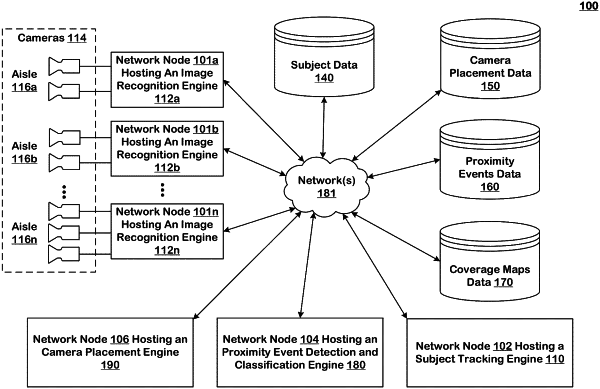| CPC H04N 7/181 (2013.01) [A47F 10/02 (2013.01); G06N 20/00 (2019.01); G06Q 20/208 (2013.01); G06T 7/70 (2017.01); A47F 2010/025 (2013.01); G06T 2207/20081 (2013.01); G06T 2207/30232 (2013.01)] | 21 Claims |

|
1. A computer-implemented method for determining an improved camera coverage plan including a number, a placement, and a pose of cameras that are arranged to track puts and takes of items by subjects in a three-dimensional real space, the computer-implemented method including:
beginning with an initial number and initial pose of a plurality of cameras and a camera model including characteristics of the cameras, iteratively applying a machine learning process to an objective function of number and poses of cameras, and subject to a set of constraints, to obtain, an improved camera coverage plan using one or more of: (i) a changed number of cameras, and (ii) a changed number of camera poses, and having an improved coverage score and concurrently using a same or reduced number of cameras, wherein applying a machine learning process to an objective function of number and poses of cameras, and subject to a set of constraints to obtain the improved camera coverage plan includes:
determining a set of camera coverage maps per camera including one of a first set of occupied voxels representing positions on a shelf in field of view; and
aggregating camera coverage maps to obtain a first aggregate coverage map for the shelf based upon the first set of occupied voxels; and
providing the improved camera coverage plan to an installer to arrange cameras to track puts and takes of items by subjects in the three-dimensional real space.
|